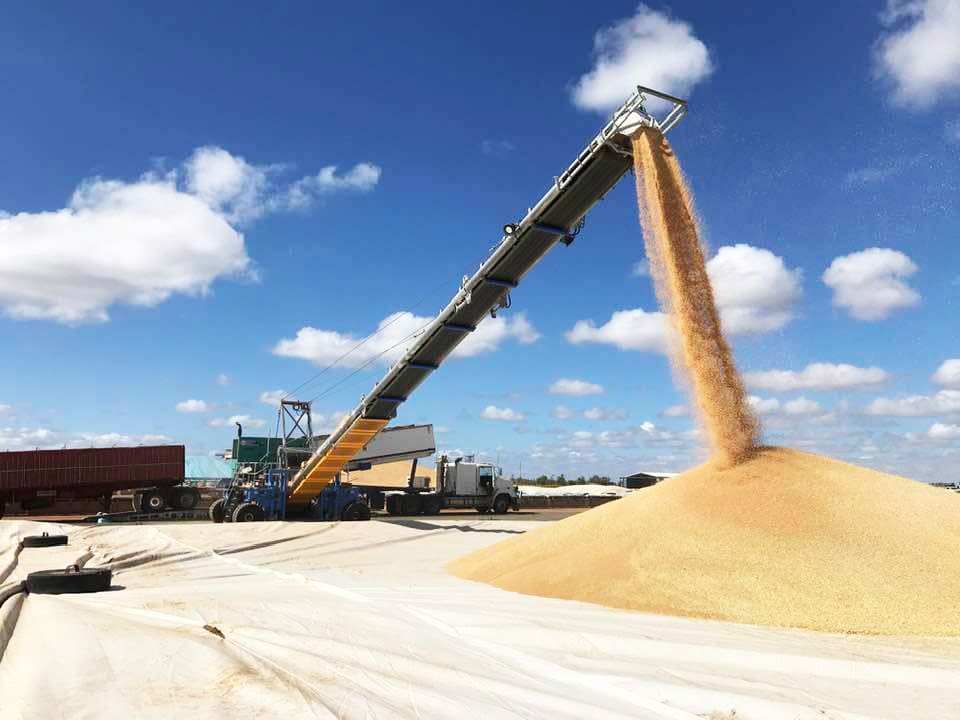
Mt McLaren is the first up-country GrainCorp site to open for the eastern Australian harvest. Photo: GrainCorp
CONCERNS about a lack of rain to finish the crop in southern Queensland and far northern New South Wales coupled with an active export program out of Victoria have lifted values for wheat in most markets this week.
Barley values are quoted as steady to higher as growers withdraw offers in the hope of higher bids, while export demand for new-crop remains subdued in China’s absence.
However, barley’s discount relative to wheat has bought it increased domestic demand going into the New Year.
Demand from China for a small amount of containerised sorghum being exported out of Queensland has held up prices now that buying has been completed for the 20,000-tonne cargo due to load in Gladstone in the next fortnight.
Some early sorghum is being planted on the western Downs of southern Queensland, and will ramp up if soaking rain falls in coming weeks.
GrainCorp has opened Mt McLaren in Central Queensland, its northernmost up-country site, this week, and others are expected to start taking deliveries in the next week or two as harvest ramps up.
| This week | Last week | Change | |
| Barley Downs Sep | $305 | $300 | Steady |
| Barley Downs Jan | $250 | $240 | Up |
| Barley Melbourne Sep | $235 | $235 | Steady |
| Barley Melbourne Jan | $230-$235 | $230 | Up |
| Wheat Downs Sep | $330 | $295 | Up |
| Wheat Downs Jan | $290 | $290 | Steady |
| Wheat Melbourne Sep | $311 | $305 | Up |
| Wheat Melbourne Jan | $293 | $285 | Up |
| Sorghum Downs Sep | $320 | $318 | Down |
| Sorghum Downs Mar-Apr | $290 | $290 | Steady |
Table 1: Indicative delivered grain prices in AUD per tonne.
Finishing rain needed
Concerns about a dry finish to the growing season have crept into the market this week.
The Liverpool Plains is the latest of northern NSW’s cropping regions where Agracom export manager Brett Donoghue said growers would like to see 50 millimetres of rain in the next six weeks to bring the crop home.
While a patchy 10-15 millimetres of rain fell in the 24 hours to 9am today in northern NSW, more is needed to preserve yield potential and good even grain size.
“New crop is a bit firmer across the board on the back of a dry run in the past three or four weeks,” Mr Donoghue said.
With 2016 being the last wet spring many growers in northern NSW experienced, Mr Donoghue said growers were reluctant to over-commit tonnage in case the rain cut out.
“There’s no panic today, but people are more anxious than they would normally be, and grower selling has dried up recently, but the potential in the paddock is still huge.”
Feedlots in southern Queensland are buying minimal amounts of grain as they wait for the high-yielding crops in NSW to pour on to the market late next month.
Qld cut, NSW lifts
ABARES on Tuesday revised down its estimate for the Queensland wheat crop from 1.4 million tonnes (Mt) to 1.1Mt, and dry conditions in the first week of spring may have further reduced the yield outlook.
“The Queensland crop is getting smaller by the day, and it looks like it will be well below 1Mt.”
ABARES revised up its forecast for NSW wheat from 8.3Mt to 10.3Mt, with excellent conditions in the state’s central and southern regions largely behind the lift.
Traders and brokers expect the inverse between current and new crop will disappear come late October, when the NSW harvest gets going in earnest on the north-west plains.
One trader said he thought Queensland’s wheat and barley exports would be confined to a small amount of containers filled with the grain stockfeed sector and flour mills could spare.
“It will all find homes right here.”
Quiet in south
In southern markets, one trader said liquidity was limited as dry conditions had growers cautious about over-committing tonnage, although 5-20mm forecast for Victoria this weekend could change that.
“There’s not a lot of liquidity down here,” one trader said.
“Growers aren’t liking the prices.”
Nor are consumers who feel sure that some current-crop barley will seep into the market by next month, and wheat prices will soften on harvest pressure from NSW.
“Their bank managers will get (growers) to sell the lot if they haven’t seen too much in the way of payments throughout the drought.”
Wilken Grain trader Andrew Kelso said the Victorian crop only needed another rain or two to realise its yield and quality potential, and barley’s discount to wheat was boosting its domestic appeal.
“New crop’s a bit stronger in Victoria on wheat, and barley’s going to be the grain of choice for feedlots.”
New-crop wheat ex southern Australian ports is being accumulated for shipment to China, The Philippines and Vietnam.
“We’re very competitive into Asian markets, and you’d assume if the Russians keep exporting at the pace they have been, they won’t have a lot left by January.”
Grain Central: Get our free daily cropping news straight to your inbox – Click here

HAVE YOUR SAY